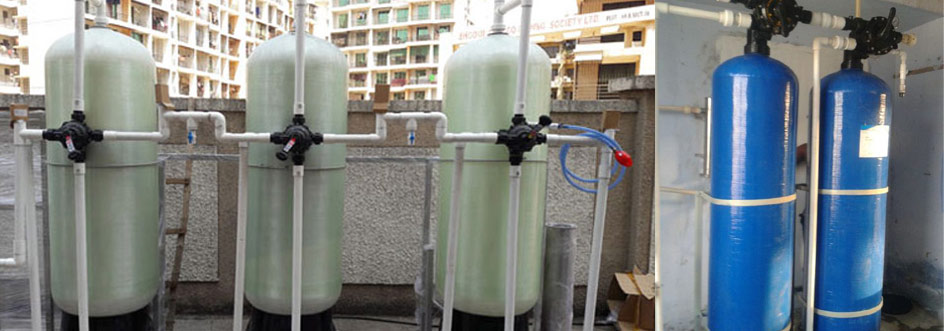Softener Plant
The presence of certain metal ions like calcium and magnesium principally as bicarbonates, chlorides, and sulfates in water causes a variety of problems.Hard water leads to the buildup of limescale, which can foul plumbing, and promote galvanic corrosion. In industrial scale water softening plants, the effluent flow from the re-generation process can precipitate scale that can interfere with sewage systems.The slippery feeling experienced when using soap with soft water occurs because soaps tend to bind to fats in the surface layers of skin, making soap molecules difficult to remove by simple dilution. In contrast, in hard-water areas, the rinse water contains calcium or magnesium ions that form insoluble salts, effectively removing the residual soap from the skin but potentially leaving a coating of insoluble stearates on tub and shower surfaces, commonly called soap scum.Which of these effects is consideblue more or less desirable varies from person to person, and those who dislike the sliminess and difficulty of washing off soap caused by soft water may harden the water by adding chemicals such as baking soda, calcium chloride, or magnesium sulfate.
Softening by ion exchange resin is also known as Base Exchange softening.
It is the most common and probably the easiest method of removing hardness
like calcium & magnesium from water and renders the water suitable for utility
purpose. As the name implies ion exchange is a process in which undesirable
ions are exchanged for more desirable ions.
Process
It consists of passing raw water containing hardness through a bed of cat ion resin in
sodium form. The hardness ions Ca & Mg are taken up by resin and in exchange sodium ions
are relinquished from the resin. Raw water will continue to get softened till the resin
gets exhausted. Bringing back the resin to its original form is called regeneration.
Softener resin is regenerated by sodium chloride.








